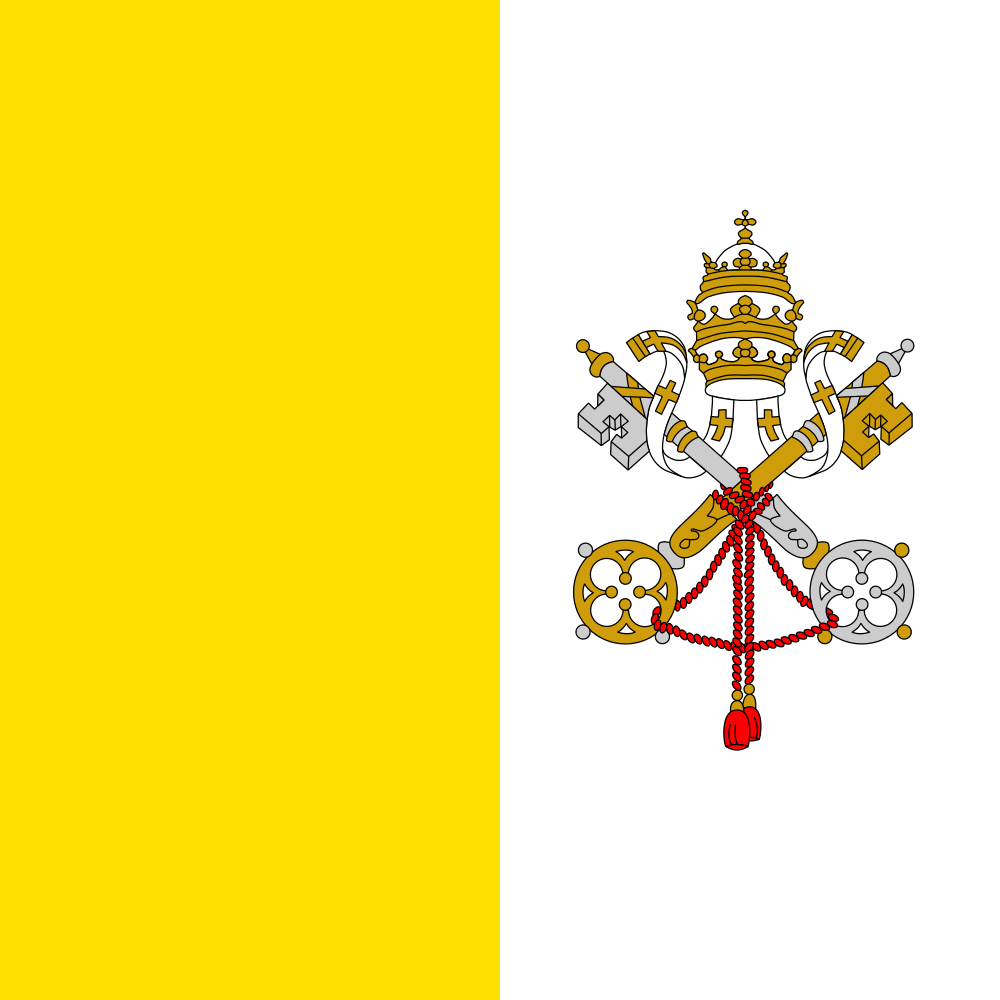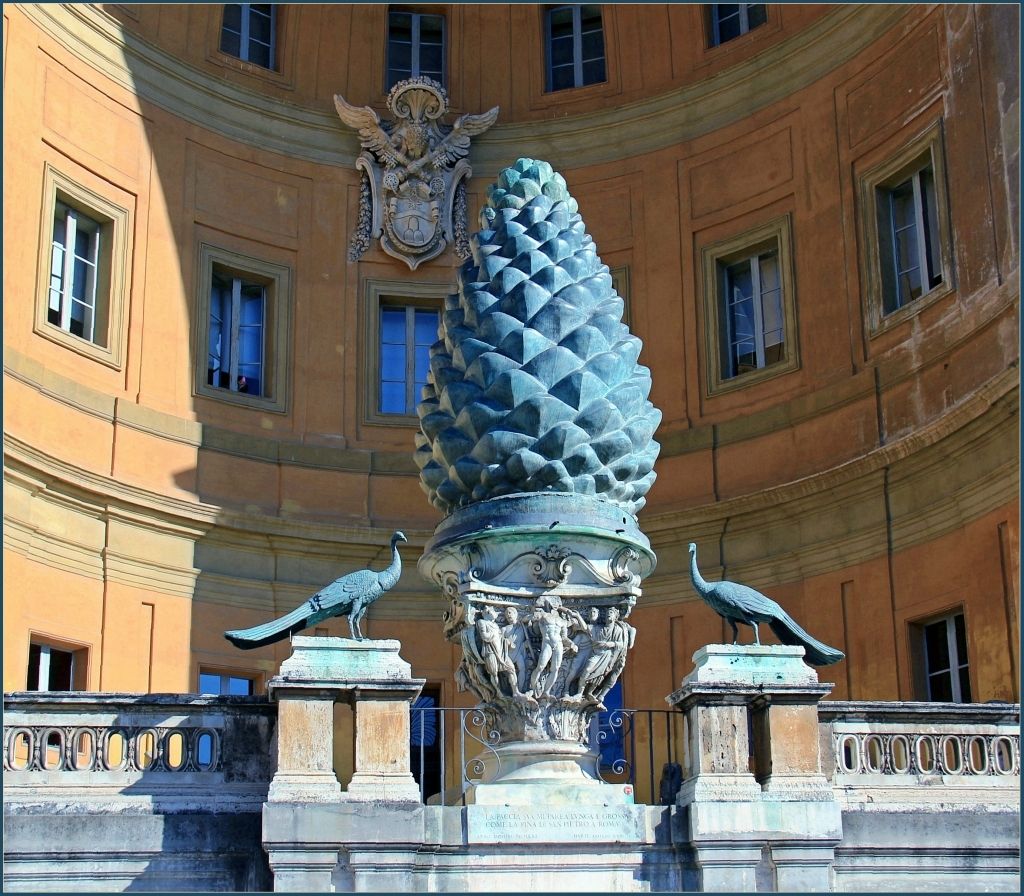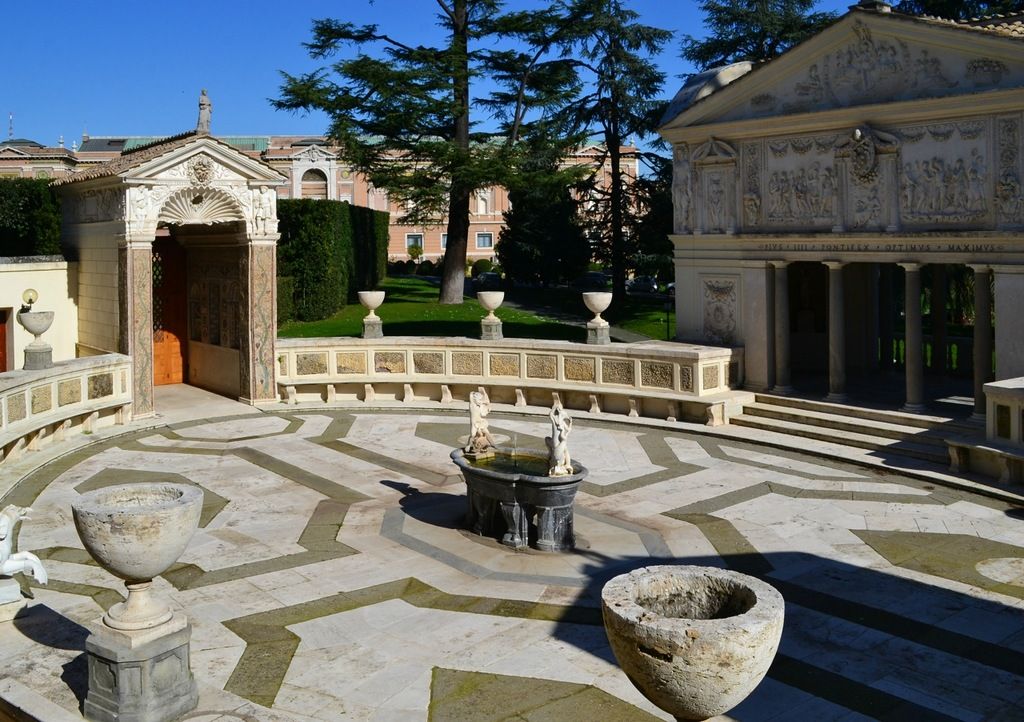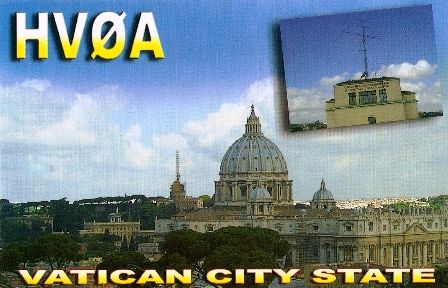IK0FVC will be active as HV0A from Vatican city in CQ WW DX CW Contest, 29 November 2025, 8 - 10 UTC.
QSL via IK0FVC direct.
Recent DX Spots HV0A
HV0A Log search Ads for direct QSL:
FRANCESCO VALSECCHI, IK0FVC, VIA BITOSSI 21, 00136 ROMA, RM, Italy.
Vatican City
Tiny but powerful in its importance in the world of Christian Catholicism, the country has specific features related to the peculiarities of its origin and purpose.
Territorially, the Vatican lands are limited to just one city: it is the smallest country on the planet.

A bit of history
Remarkably, the name of the country, traditionally translated as "palace of the Pope", is very old, originating from origins that are many thousands of years old!
In Italian, the name of the state sounds like Stato della Città del Vaticano.
The new country was the fruitful result of the so-called Lateran Agreements, which entered the national history of the country as the opening page of history. In 1929, an agreement was reached between Italy and the Holy See, secured by the signature of Italian leader Mussolini.
Having acquired the status of a city-state, Vatican City also received its name, taken from the ancient Latin name of the hill on the right bank of the Tiber River flowing in the North-West of Rome - the Vatican Hill.
The Romans who christened the Hill "Vatican Hill" were guided by ancient beliefs and the Etruscan language, a remnant of a civilisation that existed more than one thousand years ago BC and had a powerful impact on the culture of Rome.
According to legends among Romans of antiquity, the ancient Etruscan city of Vaticum was the home of the great Etruscan oracles, whose amazing prophecies were specifically called "Vaticinations" after the name of the city.
The Vatican Hill itself was considered a holy place during antiquity, and no one was allowed to settle on it: oracles only announced predictions on the Hill, and circus shows organised by the Roman Emperor Claudius were held there.
The Hill became inhabited in 326 AD only with the advent of Christianity: in that year the Basilica of Constantine was built on the supposed tomb of the first bishop of Rome Peter, after which the first residential houses were built on the Hill.

A state unlike any other: the peculiarities of its structure
The small territory of the Vatican, with a total length of borders equal to only 3.2 kilometres, is nestled right in the heart of Italy, in its capital, Rome.
Thus, the Vatican is a vivid example of an enclave - a country whose territory is entirely "immersed" in the territory of another, larger country.
The dwarf country has a so-called associated relationship with Italy: the two countries have agreed to a peaceful coexistence in which the Vatican retains its sovereignty and independence, but some administrative powers are delegated to Italy.
To use the official language of international law, the Vatican is the sovereign territory of the Holy See of the Papacy, representing the collective name of the Pope and the Roman Curia.
However, the Vatican and the Papal See are not synonymous! For example, foreign diplomats are accredited directly to the Holy See and not to the Vatican, since the Holy See is an entity in the form of clergy and theological institutions, while the Vatican is the sovereign territory where the Papal See is housed and functions.
Thus, its primary purpose is to be the official seat of the highest clergy of the Roman Catholic Church.

Who governs the Vatican
Since the dwarf state's form of government is a pronounced theocracy, all power is concentrated not with the president, nor with the king, but with the Pope at the head of the Roman Curia.
The Pope is the personification of all three branches of government:
- Legislative;
- judicial;
- executive (the head is the Secretary of State).
The term of the Pope's rule is unlimited, until his death or personal abdication.
The Pope is elected not by the population of the Vatican, but by the highest clerics of the Catholic Church - cardinals.
While the old Pope dies or abdicates (resigns), his functions, with certain restrictions, are traditionally entrusted to the Camerlengo, who governs the Vatican until the procedure of the enthronement of the new Pope.
.jpg)
International activities of the smallest country in the world
The Vatican's functions, while concentrating on the spiritual component of Catholicism, are also manifested in peacekeeping activities designed to support the reduction of military conflicts on the world stage.
Thus, since 1964, the Vatican has been an active observer on a regular basis in an international organisation designed to contribute to the maintenance of peace and security in the world - i.e. the UN, with which the Vatican has been cooperating for 61 years.
Ten years ago, the city-state became a member of the international criminal police organisation, fighting general crime without a religious background (politics, religion, militarism and race are excluded from Interpol's methods by its statutes).

What language to speak
Despite the fact that the Papal See, as well as the Catholic Church itself, use its own official language - ecclesiastical Latin - Italian is spoken on the streets of the Vatican: it is the official language of the "state within the state".
Specifics of a dwarf theocratic country
Italian law enforcement agencies are responsible for the state of law and order on the territory of the Vatican.
At the same time, the city itself has the possibility, guided by the purposes of religious rites, to close its borders both for ordinary citizens and for the Italian police forces.
Not a single person has been born on the territory of the state since 1983, but the greatest works of art are still preserved:
- Museums, especially the Sistine Chapel;
- St Peter's Cathedral;
- Vatican Library.

How the population lives
Citizens have citizenship acquired through service to the Holy See, which is confirmed by a special passport issued by the Secretariat of State.
According to statistics, less than 5 per cent of the six hundred citizens of Vatican City are laymen, while the rest are members of the clergy or guards.
The Vatican's non-profit orientated economy is traditionally based on two components:
- donations collected from Catholics around the globe;
- income from tourism, visits to museums and the sale of goods with symbols (stamps, specific coins, souvenirs).
Money circulation on the territory of the country is regulated by the Vatican's own bank, called the "Institute for Religious Affairs".
Given the modest size of the Vatican, its funding is quite decent, and is estimated in dollar terms at more than three hundred million.
Video Vatican

